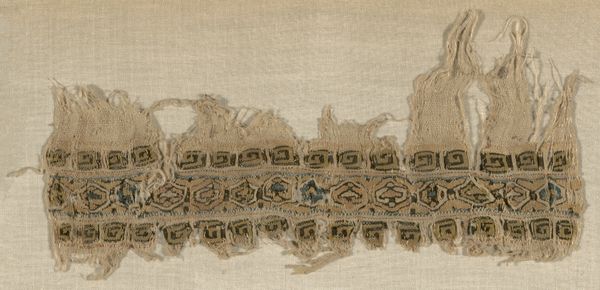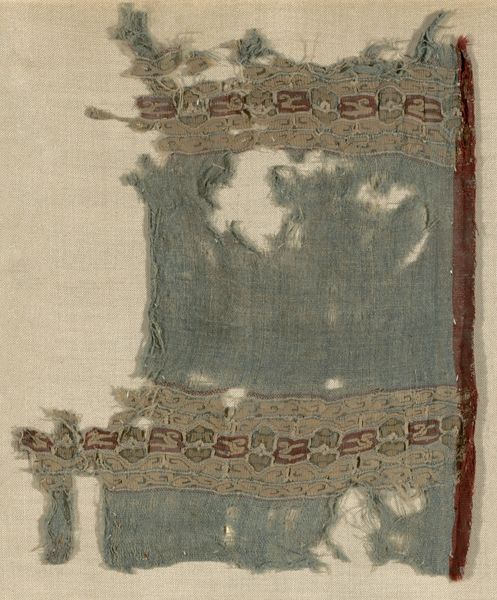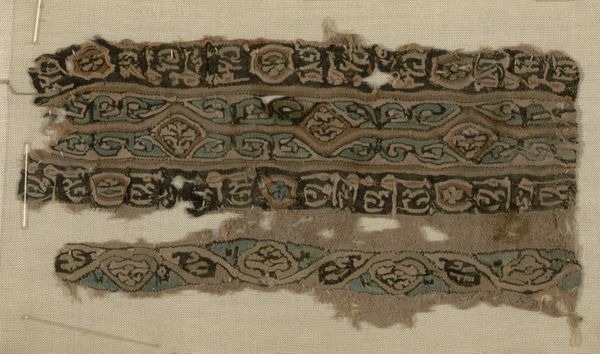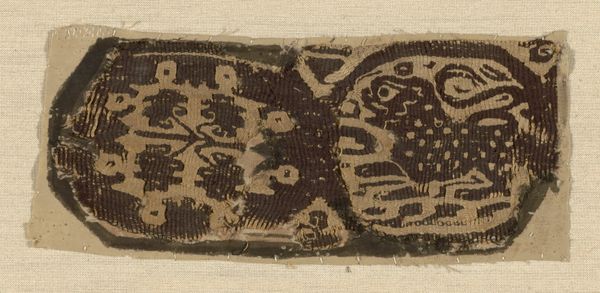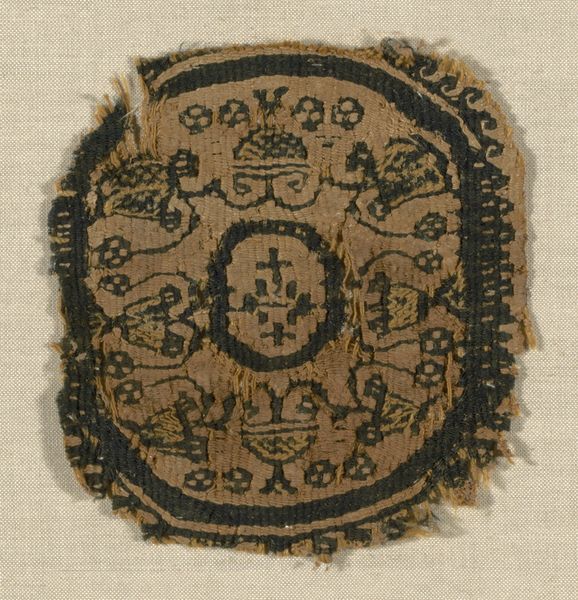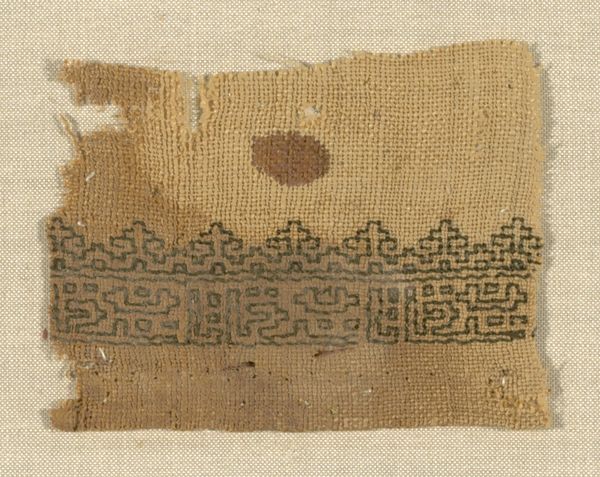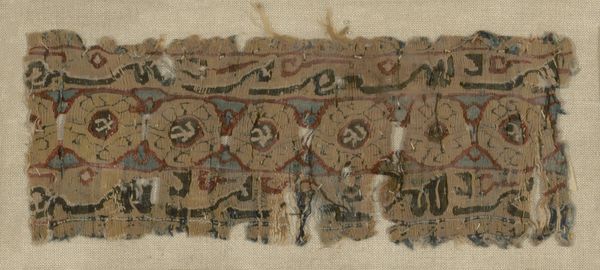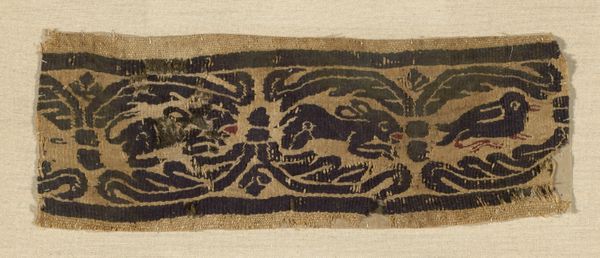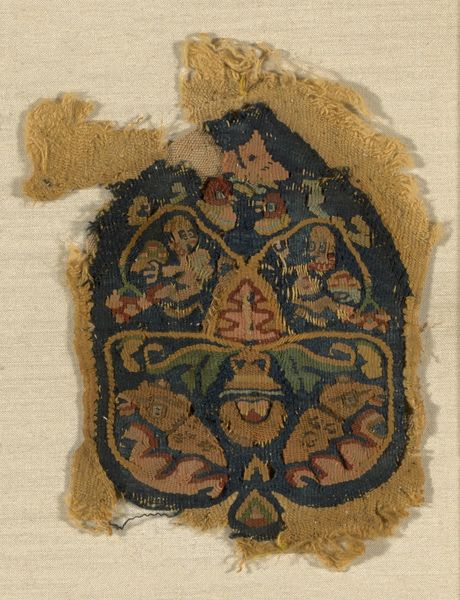
fibre-art, weaving, textile
#
fibre-art
#
weaving
#
textile
#
egypt
#
islamic-art
Dimensions: 7.3 × 12.5 cm (5 × 2 7/8 in.)
Copyright: Public Domain
Curator: This object, a textile weaving titled "Fragment," is attributed to Egypt, likely produced sometime between 969 and 1171. Its anonymous maker employed fiber art techniques to create this intriguing piece. Editor: It's really striking, isn't it? Even in its damaged state, it carries a strange power. The loose threads feel like the unraveling of a story, all that fading material pointing to lost voices. Curator: Absolutely. It invites a range of critical questions. How did societal power dynamics influence the work of anonymous artisans during this period of Islamic rule in Egypt? And what about the economics and the politics surrounding textile production at the time? This was a commodity, and this artefact speaks of ancient industry and global connection. Editor: I immediately focus on the symbolism woven—literally—into this piece. The horizontal bars alternating in color strike me first, repeated forms that perhaps represent levels of society or even elements of an architectural structure. Then you notice how the artist explored contrast between rigid linearity and soft, organic forms that could easily relate to the idea of continuous cycles, to growth and decay. Curator: What fascinates me is the relationship to the whole. How does exhibiting only this "fragment" shift its meaning? Was it once part of a larger, functional textile—clothing, perhaps, or a decorative hanging? Now it resides divorced from function, placed here for aesthetic contemplation in our modern age. Editor: This repositioning asks us to think about art as separate from its original role. Think of this object in contrast to ritual cloths which contained certain powerful, intrinsic properties. So how much are we losing and how much gaining, if anything, in seeing and valuing textiles solely through a lens of abstract appreciation? Curator: A question worth asking about so many artefacts in museum spaces. Examining that power dynamic forces us to reconsider what we truly value about the object. Editor: And, perhaps to think about where these remnants should find their rightful rest and future… Curator: Indeed, this piece encourages us to confront both visible and invisible contexts—allowing us to engage with broader discussions of social and cultural identities in their complex layering.
Comments
No comments
Be the first to comment and join the conversation on the ultimate creative platform.
